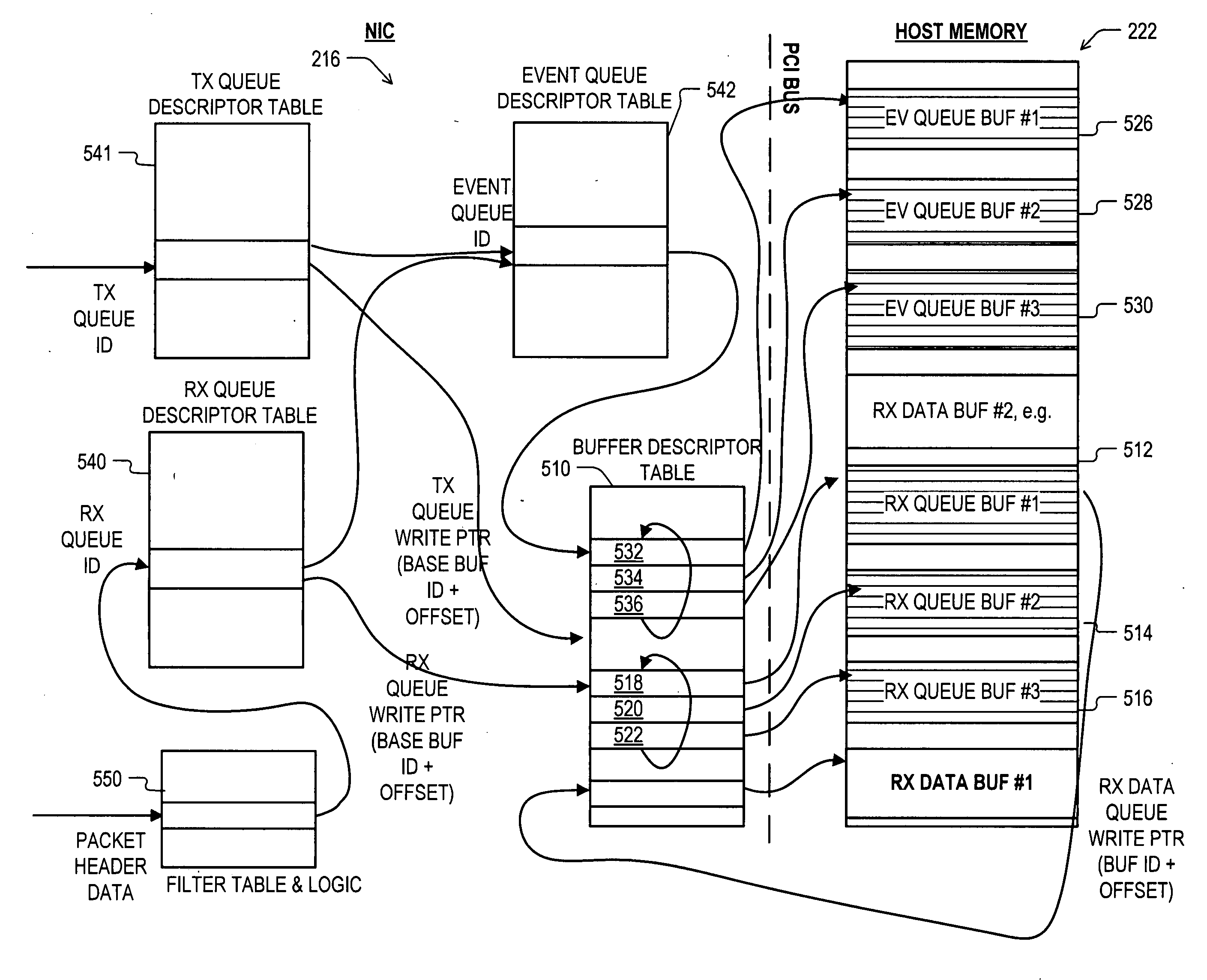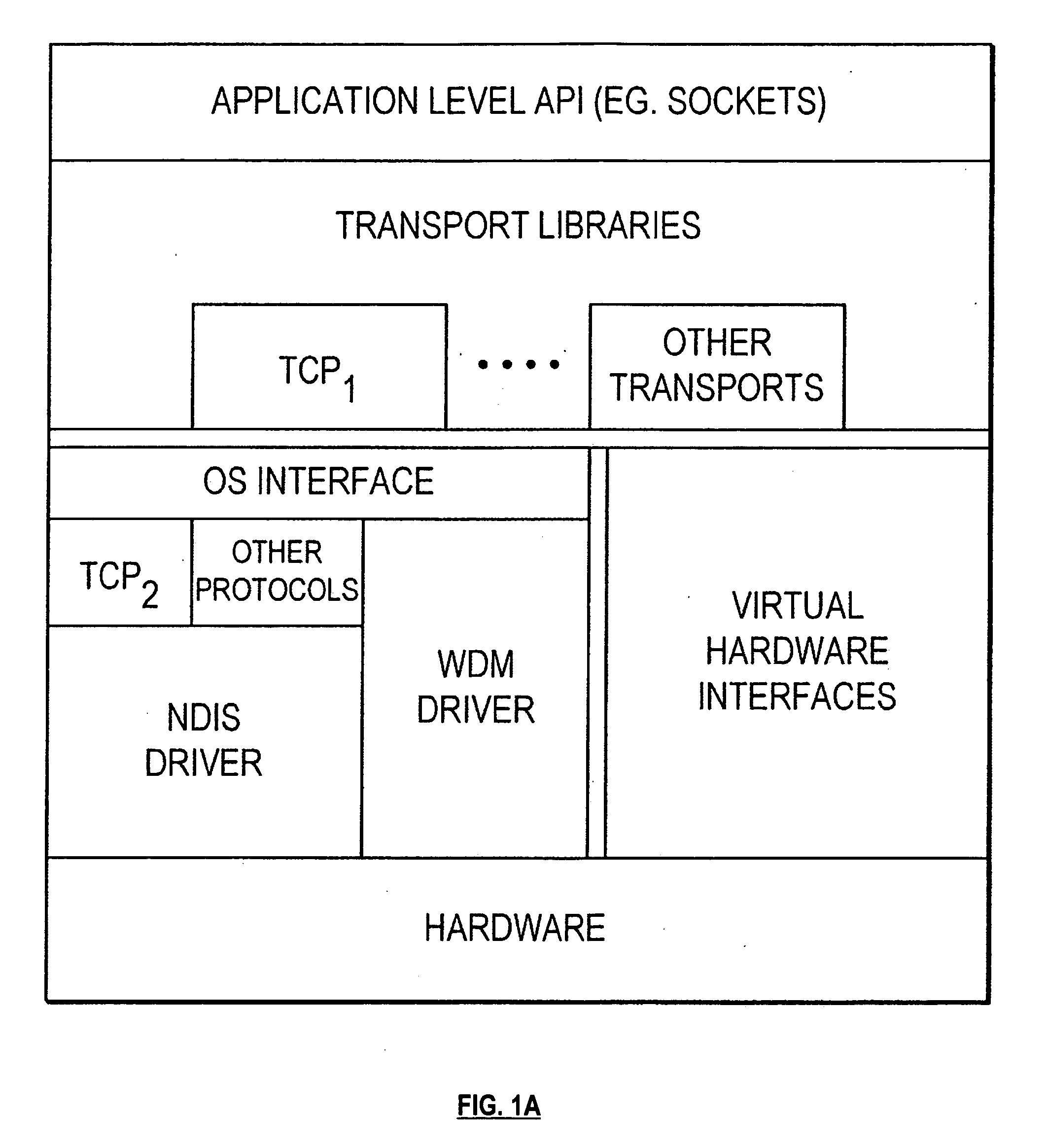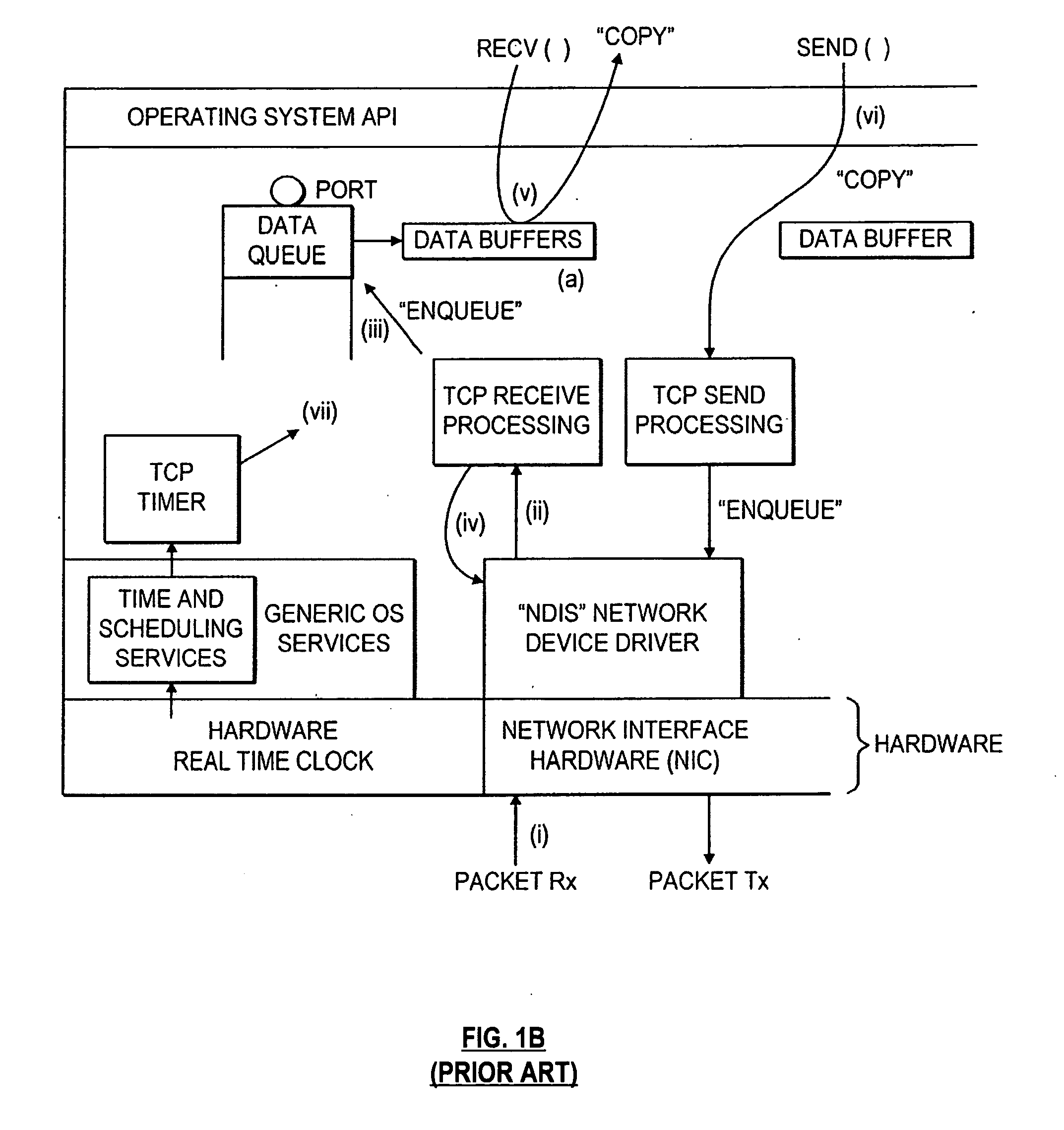Hashing algorithm for network receive filtering
a network receive and filtering technology, applied in the field of network interfaces, can solve the problems of significant degraded performance of the computer system overall, difficulty in implementing transport protocols at user level, and insufficiently addressing a number of the problems required to achieve a complete, robust, commercially viable implementation
- Summary
- Abstract
- Description
- Claims
- Application Information
AI Technical Summary
Problems solved by technology
Method used
Image
Examples
Embodiment Construction
[0061] The following description is presented to enable any person skilled in the art to make and use the invention, and is provided in the context of a particular application and its requirements. Various modifications to the disclosed embodiments will be readily apparent to those skilled in the art, and the general principles defined herein may be applied to other embodiments and applications without departing from the spirit and scope of the present invention. Thus, the present invention is not intended to be limited to the embodiments shown, but is to be accorded the widest scope consistent with the principles and features disclosed herein.
[0062]FIG. 2 is a simplified block diagram of a typical computer system 210 which can communicate via a network 212 with other computer systems such as 230, 232 and 234. Computer system 210 includes a network interface card (NIC) 216 communicating via a communication channel 218 with a host subsystem 214. The host subsystem 224 includes a pro...
PUM
 Login to View More
Login to View More Abstract
Description
Claims
Application Information
 Login to View More
Login to View More - R&D
- Intellectual Property
- Life Sciences
- Materials
- Tech Scout
- Unparalleled Data Quality
- Higher Quality Content
- 60% Fewer Hallucinations
Browse by: Latest US Patents, China's latest patents, Technical Efficacy Thesaurus, Application Domain, Technology Topic, Popular Technical Reports.
© 2025 PatSnap. All rights reserved.Legal|Privacy policy|Modern Slavery Act Transparency Statement|Sitemap|About US| Contact US: help@patsnap.com



